

Research
Our research is multidisciplinary and covers a wide range of areas. Members work on cross-cutting themes, addressing the “grand challenges” in energy, healthcare, information technology, sustainable technology and more generally, technologies associated with “quality of life”.
Research spotlight
Professor Ravi Silva was interviewed by video blogger Charbax, where he talked about what we are doing here at the University within energy and nanotechnology.
Current PhD Projects
Projects are very often formulated through discussions between prospective students and individual staff members, so if there is an area that interests you but you are unable to find the specific project listed, please contact us to discuss further.
Project supervisor: Dr Maxim Shkunov
Project description
Enabling ultra-sensitive measurements of chemical and electrical signals produced by human organs with bio-compatible devices, without wires, on ultra-flexible substrates, is of paramount importance for future bio-medical devices targeting early stage diseases diagnostics as well as patients monitoring. This project will explore new approaches for both on-skin and also implantable flexible sensors that are fully compatible with bio-tissues and operate under realistic conditions when devices are interfaced with ‘wet tissues’ with bio-electrolytes. Novel organic semiconductor sensor devices will be incorporated onto soft substrates, and designed with specific response to either bio-chemical signals, or to very small changes of electric potential. Ultra-flexible, and also stretchable nature of the electronic part is the key to the future bio-medical sensors compatible with a variety of applications from cardiac monitoring to brain cells activity recording.
An advanced bio-medical sensing device in combination with in vitro cardiovascular model for drug testing will be suggested as the outcome of this project.
Supervisor team is highly interdisciplinary, with excellent level of expertise in the key areas of the project and Institutional support will ensure PhD student’s access to equipment and corresponding training across University laboratories.
Applicant Specifications
First class undergraduate or masters degree and very strong background in either of the disciplines: engineering, materials science, bio‐ physics, physical chemistry, veterinary medicine, with excellent practical and analytical skills and demonstrated aptitude for interdisciplinary research.
Enquiries: email Dr Maxim Shkunov
Supervisor: Dr Maxim Shkunov
Water is the most critical resource of Earth, as our daily lives fully dependant on the supply of clean water. Still, lots of communities around the globe are dealing with contaminated water sources. Efficient, low-cost and accessible to all, on-site water quality monitoring is the key challenge that we address in this project.
We will develop electrolyte-gated organic field-effect transistor (EGOFET) sensors with selective properties for various heavy metal ions and arsenic species contaminants in water. The detection sensitivity is expected to be dramatically enhanced due to EGOFET design, and operational voltages will be less than 1 V. Specific receptor molecules will be used to develop an array of sensors, each responsible for tracking a particular pollutant, thus giving us to almost instantaneous identification of multiple pollutants.
We will address challenges related to large-area printing fabrication of sensors on flexible substrates to enable low-cost devices, that we also envision to be interfaced with smart-phones for wide adoption of the technology.
In the long term, the proposed EGOFET-sensor devices will enable a new generation of low-cost sensor platform for environmental monitoring.
Supervisor: Dr Vlad Stolojan
Ultralight sponges fabricated from bio-compatible polymer nanofibres are ideal scaffolds for cellular attachment and assembly and growth into tissues. Nanofibres sponges are fabricated using electrospinning, a process where a very high voltage is used to draw a very thin fibre jet from a droplet of dissolved polymer. During the drawing process, the molecules in the fibre align with the stretching direction and the electric field, such that the end material has many superior mechanical and electrical advantages over any other form of polymer film, increasing the strength of carbon-fibre composites and making the most effective viral mask filters, for example.
This project will cover
- discovering ways of producing electrospun ultralight sponges with specific properties;
- inventing ways to add specific elements that aid cell growth and direct tissue formation (drugs, growth substances etc);
- designing and printing (3D printing) support structures that can integrate nanofibres, to direct tissue growth;
- working with biology colleagues to demonstrate the key advantages of your nanofibre sponges.
Within this project, you will learn to plan experiments smartly, you will learn to acquire, analyse and interpret data critically from a variety of industrially-relevant analytical instruments, you will learn to communicate effectively, work with and lead teams of researchers around your project goals.
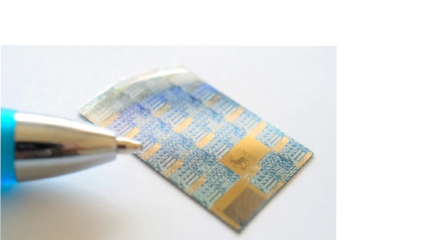
Supervisor: Dr Radu Sporea
In a recent study we have identified the conditions in which thin-film transistors can be optimised for low-power, high gain operation. Such devices would form the first line of data processing from optical, chemical and biological sensors with exceptional energy efficiency and sensitivity, bridging the benefits of traditional and quantum systems for applications beyond the Internet of Things and.
In this project, we will be demonstrating for the first time these high-performance transistors using high-end techniques such as submicron laser lithography, focused ion beams, and assisted by advanced numerical simulations. We will also enlist the experience of our numerous interdisciplinary collaborations to achieve a far greater functionality-complexity trade-off than with conventional incremental development. As a PhD student within the team, you will interact with researchers in Japan, The Netherlands, Italy, South Korea, France, USA, and several UK centres. At least one secondment visit to partner institutions is planned.
The successful candidate will be a self-motivated, determined person, driven by a desire to engineer elegant solutions based in solid science. A good degree in Electronics, Physics, Material Science, Chemistry is a must, as are: a collaborative, inclusive approach; a focus on continuous improvement; and a strong drive toward sustainable technological development.
Further reading:
A new device with unique functionality could signal a new design philosophy for electronics
Compact Source-Gated Transistor Analog Circuits for Ubiquitous Sensors
The Secret Ingredient for Exceptional Contact-Controlled Transistors
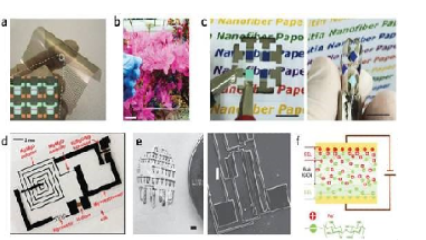
Supervisors: Professor Ravi Silva, Dr Jose Anguita, Dr Radu Sporea and Dr Maxim Shkunov
The institute will be delivered a state of the art Nano-OPS (Nanoscale Offset Printing System) in May 2022. We will develop a process capability that allows low cost mass-manufacture of wearable and printable components and systems with nanometre resolution down to 100 nm without the need for photolithography on flexible substrates. Using this base we will integrate electronic circuits with low energy communication interfaces, energy harvesting with storage modules, sensors and actuators in a single flexible platform for multi-functional applications and demonstrators.
The Internet is expanding beyond the traditional computing and communications devices that we use daily to include any physical object in our environment. This expansion is known as the IoT. Next generation mobile communications networks will allow sensors attached to any object to share information about its local environment over the Internet. These sensors are being developed and initial versions that have been deployed are already making in-roads into retail, health-care, environmental and security monitoring. With large numbers of sensors in place, they enable a detailed understanding of our environment, which allows better monitoring and new types of control for higher living standards.
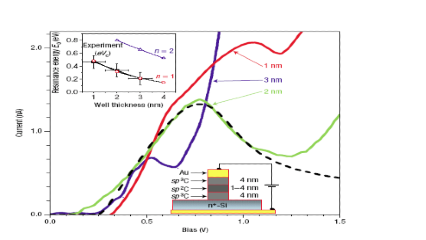
Supervisors: Professor Ravi Silva, Dr Jose Anguita, Dr Radu Sporea and Dr Maxim Shkunov
Nano-carbon materials include amorphous carbon quantum dots, carbon nanotubes and graphene films. Do this group we also need to add diamond-like carbon superlattices, whose quantum confinement in the z-dimension has given rise to many favourable and unique properties, that include high speed electron transport. Preliminary device structures showed resonance tunnelling device characteristics in the GHz regime with potential towards THz devices. We believe the use of well designed nano-carbon devices could revolutionise the field of large area electronics with both electronic capability matched with photonic links of highly absorbent 2D graphene saturable absorbers.
Within this programme we will look for electronic devices that will follow the silicon device technologies, that will need to supersede its functionality and limited mobility. Furthermore, by using the large area capability of the nano-carbon family we will look to produce functional devices that can be scaled and optically active for sensors and device applications. In the case of the carbon quantum well structures, we will look for tunnelling with negative differential conductance at room temperature and temperature invariant delocalised conductance over a wide range in nitrogen doped amorphous carbon (a-CNx)/n-Si heterostructures. These structures will be fabricated by optimising the tunnel barrier through the control of the band gap and doping level in PECVD and plasma deposited amorphous carbon thin films. The impact of donor level and a large phase coherence length for fast device operations will be a feature to be exploited.

Supervisor: Dr Radu Sporea
A growing demand for green and energy efficient electronics has shifted the research focus toward new materials and fabrication techniques. Our team has been developing new thin-film transistor architectures and associated bespoke circuits with superior power efficiency, manufacturability and net cost.
In this project, we will be building next-generation sensing and analog computation circuits designed to operate at extremely low energy requirements for upcoming “imperceptible” wearables and remote sensing. We will combine our simulation and fabrication expertise with the experience of numerous interdisciplinary collaborations to achieve a far greater functionality-complexity trade-off than is possible rather than by simply improving conventional methods. As a PhD student within the team, you will interact with researchers in Japan, The Netherlands, Italy, South Korea, France, USA, and several UK centres. At least one secondment visit to partner institutions is planned.
The successful candidate will be a self-motivated, determined person, driven by a desire to engineer elegant solutions based in solid science. A good degree in Electronics, Physics, Material Science, Chemistry is a must, as are: a collaborative, inclusive approach; a focus on continuous improvement; and a strong drive toward sustainable technological development.
Further reading:
A new device with unique functionality could signal a new design philosophy for electronics
Surrey student’s discovery could improve smart electronics
Compact Source-Gated Transistor Analog Circuits for Ubiquitous Sensors
The Secret Ingredient for Exceptional Contact-Controlled Transistors
Supervisor: Dr Vlad Stolojan
Our world needs energy-efficient solutions to convert electrical energy to mechanical and thermal. Copper wiring has served us well over the last century, but it has some drawbacks at high-frequency currents, when high power is required for low weight (eg space/aviation/automotive). Carbon nanotubes can be as conductive as Cu, can carry more current for the same diameter than Cu and weigh four times less than Cu, so the challenge is to either grow them very long, or find smart ways to connect them without increasing the resistance. Furthermore, they are nearly-perfect black bodies, meaning that they emit infra-red radiation very effectively, which would make ideal room heaters, amongst others.
Within this project, you will discover new ways to contact, connect and fabricate carbon nanotube wires, you will invent new devices that harness the power of carbon nanotubes and expand them towards making the most powerful electric motor (power-to-weight) and the most efficient room heater.
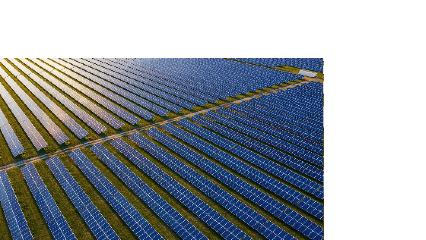
Supervisors: Dr Wei Zhang and Professor Ravi Silva
To date, crystalline silicon-based solar cells dominate 90% of the solar market due to their technological maturity and high power conversion efficiency (PCE) of ~ 25%. However, these cells suffer from relatively high production costs, long energy payback times and are rigid, with heavy form factors. They are therefore unsuitable to power the rapidly growing portable electronics market, particularly wearables and Internet of Things (IoT) devices that are expected to reach trillions of units in the next few years. Current commercial solar technologies are also not compatible with the blooming mobile solar markets requiring high specific power (W/kg) or portable electronics requiring flexible form factors. It is therefore urgent to develop cheaper materials together with scalable manufacturing techniques to further accelerate the uptake of solar electricity.
In this context, metal halide perovskites have emerged as a new class of semiconductor having important applications in next generation solar cells. Indeed, an unprecedented advancement in the PCE of perovskite solar cells (PSCs) has resulted in the demonstration of devices having certified PCEs of 25.8%. Significantly, such materials are based on inexpensive starting compounds that can be processed at low-temperatures using solution-based techniques; properties that open up disruptive technology applications.
The project is targeted to develop stable perovskite materials and other device layers (window electrodes, charge transport materials, metal contacts, etc.) suitable for flexible perovskite solar modules by scalable deposition techniques. Other core tasks include the understanding of the degradation mechanism of flexible perovskite solar modules using accelerated ageing tests, and developing robust encapsulation strategies for sustainable and long-term use. This project will finally create a database for use by external parties to communicate measurement standardisation, data reporting and to report optimised device structures and processing techniques.
We expect that success in our research will - in a shorter time frame - open the very large wearables and IoT power-source markets,and will power the increasing number of mobile (wireless) technologies that currently utilise conventional Li-ion power batteries. Looking further ahead, we expect our project to de-risk the application of PSCs for larger scale deployment. Here, the exploitation of clean and renewable energy sources is a global challenge that we must solve in the next 30 years if we are to avoid non-reversible environmental changes. We therefore propose to exceed the state of the art in the development of current flexible perovskite solar cells (f-PSCs). This will be developed together with key stability demonstrations.
You will work in a multi-disciplinary team including personnel from the ATI and research collaborators external to the ATI. The research team is a partnership between Surrey and leading experts in perovskite photovoltaics from the Universities of Oxford, Sheffield and Cambridge, and supported by partners including National Physical Laboratory, NSG Group, Swift Solar, Ossila, Oxford PV, Coatema and QinetiQ. More information can be found at https://www.surrey.ac.uk/news/university-surrey-awarded-close-ps3-million-funding-perovskite-solar-cell-research
Informal academic enquiries can be made to Professor Ravi Silva s.silva@surrey.ac.uk, and Dr Wei Zhang wz0003@surrey.ac.uk
Supervisor: Dr Imalka Jayawardena
As silicon approaches its efficiency limits, there is a drive towards pushing solar cell efficiencies beyond the single junction detailed balanced limit. Thermalization loss, one of the key loss mechanisms in single junction solar cell efficiency can be minimized through the building of multijunction device concepts.
In this project, we aim develop an all perovskite multijunction photovoltaic technology. Perovskites are a solution processable semiconductor technology whose properties can be tuned by altering the material composition resulting in semiconductors with optoelectronic properties that compete with gallium arsenide. We have been among the earliest to propose and demonstrate graded doping in lead-tin mixed low bandgap perovskites that led to the realization of early demonstrations of reduction in device losses through graded doping. This project will build on these developments, our current activities on new interfaces, and defect passivation strategies as means of reducing losses in these perovskite multijunction solar cells with potential applications in both terrestrial and space energy harvesting.
Selected references
Approaching the Shockley–Queisser limit for fill factors in lead–tin mixed perovskite photovoltaics
Supervisor: Dr Eran Ginossar
Electrons in so called topological superconductors, as well as lattices of interacting qubits, are predicted to undergo topological phase transitions in certain conditions. The ground state of these systems can be used to store and protect quantum information.
Circuits are called hybrid when topological superconductors interact with conventional superconducting circuits, to interface and manipulate the stored quantum information. We recently proposed a method to detect signatures of Majorana fermions in hybrid devices by employing the sensitive apparatus of the superconducting charge-qubit architecture and its efficient coupling to microwave photons. In the charge and transmon regimes of this device, we find robust signatures of the underlying Majorana fermions that are, remarkably, not washed out by the smallness of the Majorana contribution to the Josephson current (see https://www.nature.com/articles/ncomms5772).
In this project you will build a strong understanding for the underlying of the theoretical models behind the solid-state and superconducting devices and building on it, you will analyse the physics of the hybrid superconducting circuits with an aim to propose new methods to detect and control quantum information. The project is suitable for mathematically oriented students with keen interest in analytical and computational techniques in condensed matter theory and quantum optics, with application to quantum computing.
Supervisor: Dr Imalka Jayawardena
The rapid growth in 5G/6G technologies has led to a growth in the potential application space for wearable electronic devices. Among the potential applications for such devices include the possibility of real-time monitoring (or diagnostics) of health and treatment based on photodetector and light emitting technologies. The potential combination of both diagnostics and therapeutics on a single device platform has the potential to revolutionize healthy living while reducing the burden on healthcare.
Metal halide perovskites and in particular, quantum confined metal halide perovskites offer the potential of light emission with high quantum efficiencies and detection with high sensitivity. However, several key challenges such as stabilization of emitters and detector semiconductors with bandgaps at energies relevant to wearable devices remain a key challenge.
In this project, the successful candidate will look towards stabilizing perovskites with the desired compositions through means of chemical engineering of materials as well as modification of device architectures.
Selected references
Developing a Flexible X-ray Detector
Safer X-rays and radiation therapy a step closer thanks to Surrey research
Supervisors: Professor Jeremy Allam and Dr Youngchan Kim
There has been intense interest in understanding the biological molecules, biomolecular systems and biomimetic structures that give rise to quantum effects in the last decades. Importantly, evidence suggests that subtle quantum effects may shape biological processes and functions in living organisms.
This is an exciting and emerging science of the 21st century where there are many fascinating fundamental questions that will inspire new ways to develop next-generation biomimetic and biological quantum technologies to solve real-world practical problems while satisfying our intellectual curiosity. This project will explore how the intersection of vibronic states, biomimetic structures, ultrafast measurements influence the direction of improved efficiency in artificial light harvesting structures and further synthetic biological systems.
Supervisor: Dr Yunlong Zhao
How to maximise the electrical energy supplies and balance the CO2 emissions has been a global imperative that the world needs to be urgently addressed. Metal–CO2 batteries utilising CO2 as a cathodic reactant have been recently proposed and considered as a very promising strategy to promote CO2 fixation and advanced energy conversion and storage. This project presents ambitious and adventurous research into the novel metal–CO2 battery technologies, seeking to achieve a breakthrough in efficient CO2 fixation and advanced energy conversion/storage, through rapid on-chip screening of catalysts, fundamental studies of electrochemical mechanisms and ultimately macroscale practical application.
Related link: https://www.surrey.ac.uk/news/surrey-develop-battery-technology-capable-capturing-co2-emissions
Supervisor: Dr Yunlong Zhao
As implantable electronics developed for monitoring biological signals and therapy have been extensively explored and deployed clinically, surging demand for non-invasive implantable biomedical electronics occurred in recent years. Current implantable microelectronics power and sensing units are either rigid or bulky, resulting in immunological rejection and incision, and unable to provide sufficient output power for long-term use. Through this project, we are aiming to develop ultraflexible biocompatible power unit and multifunctional sensors as a new paradigm of minimally invasive implantation and sustained operation of advanced implantable electronic system.
Related link: https://www.thetimes.co.uk/article/the-smart-contact-lens-that-monitors-for-diabetes-and-strokes-frsvqstnj
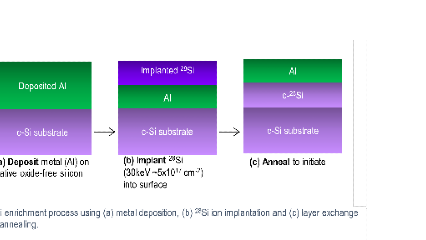
Supervisor: Professor Jonathan England
This PhD will continue to improve our layer exchange method currently being developed in the Ion Beam Centre in collaboration with Tyndall Institute and two universities in Cork, Ireland. The implanted layer exchange process uses ion implantation of 28Si into Al layers deposited on silicon with the goal to produce isotopically pure 28Si layers for quantum technologies. A full presentation of this method can be found at https://uknibc.co.uk/UserDay/index.php.
Chemical methods need to be developed to reduce the low levels of Al remaining in the Si after the layer exchange anneal and to improve layer thickness uniformity and crystal defectivity. Al spin lifetime measurements (in collaboration with the EPSRC National EPR Facility) will be used first to measure trace concentrations of Al remaining after chemical purification and ultimately to see if the amount of Al can be reduced such that the lifetime of a few remaining Al acceptors can be made long enough to function as part of an Al based qubit. The technique could also be extended to produce other isotopically pure materials (for example SiGe and Ge).
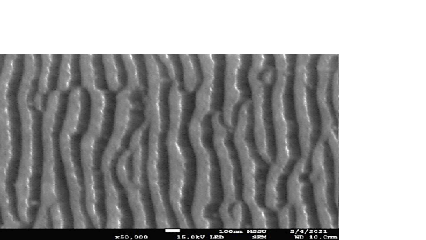
Supervisor: Professor Jonathan England
The Ion Beam Centre at Surrey is the lead organisation (with Manchester and Huddersfield Universities) of the UK National Ion Beam Centre that supplies world-wide academic and industrial customers with ion beam analyses and ion implantation based processing (https://uknibc.co.uk/SIBC/). Process and analysis results are underpinned by extensive modelling studies. Present topics supporting ion beam analysis include the modelling of sputtering in ERD, channelling effects in RBS, metrology of 3D structures using SIMNRA, StructNRA, Potku, MC-ERD, FLUX, CrystalDraw and TRIDYN. To model ion beam processing (implantation and PVD) and other analysis techniques (ion and cluster based sputtering for SIMS and depth profiling XPS) SIBC uses the binary collision approximation codes SRIM, SUSPRE, TRIDYN, TRI3DYN and molecular dynamics code LAMMPS. For understanding diffusion in isotopic enrichment anneals, aging of metal coatings and semiconductor processing we use the kinetic Monte Carlo code SPPARKS and Silvaco TCAD modules. In short, there is a smorgasbord of problems to solve and tools to use and develop. You can see short videos presenting many examples of this work at https://uknibc.co.uk/UserDay/index.php.
This PhD will initially model the formation and understand the extensive observations of self-sustaining ripple and dot (“Bradley-Harper”) patterns that we have collected when analysing Ar cluster beam sputtering used for depth profiling XPS of semiconductor materials (see below) and have predicted for O ion sputtering in SIMS.
Research areas
Our research is conducted in close collaboration with colleagues in other divisions within the University and in industry.
Research laureates
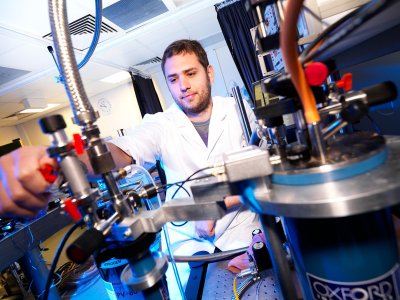
We recognise the most significant contributions to our activities by our staff and students on an annual basis by awarding ATI Research Laureates each year. There is a maximum number of awards, which will be considered by the management committee, and presented to the director who will make the final decision.
The process is to reward excellence and outstanding contributions by individuals, particularly in leading activities and enabling excellence that is evidenced quantifiably. The same ‘activity’ may not be reconsidered in the following year(s), should it have won an award in any previous year. The decision of the award committee is final.
A laureate can get an award for two years running and then will be acknowledged in the following year, before qualifying once more. The scheme set up by the management committee is to encourage excellence, wherever it is found.
2022 laureate winners
Winners and contribution highlights over the last year.
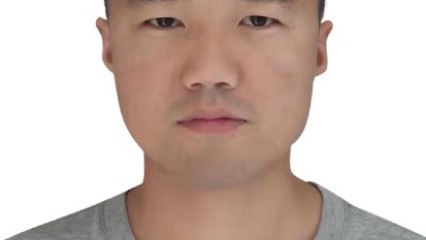
For his contribution to research in high impact publications
For his contribution to research in high impact publications and collaborative projects.
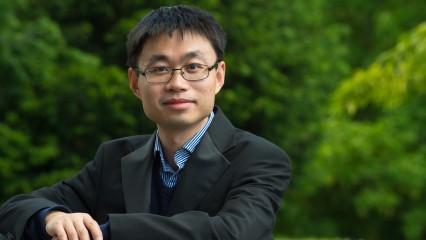
For his contribution to research in high impact publications.
For his contribution to research in RAISIN project.

For his contribution to research in high impact publications.
In 2022 we extended our unique know-how and ATI capabilities by developing multifunctional superlattice optical nanobarrier structures.
These have been applied to various polymeric and composite material structures by means of a bespoke room-temperature process and coating system.
We have demonstrated enhanced environmental and dimensional stability of space-qualified composites, along with smart thermal management and coupled functionalities such as electrical conductivity. The multilayer nanostructures are integrated on several space missions together with Airbus, space agencies and commercial applications.
Our research work was featured in ACS publications, Science Custom Publishing and Nature Portfolio. The industrial coating system has been built for large-area deposition, 3-D structures and commercial production.
For her contribution to research in high impact publications.
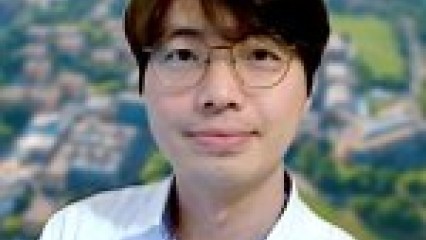
For his contribution to research in high impact publications.
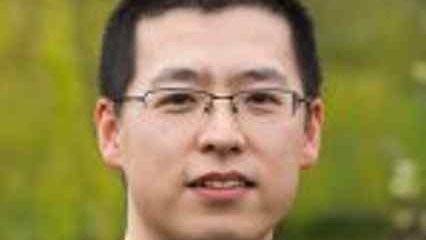
For his contribution to research in high impact publications.
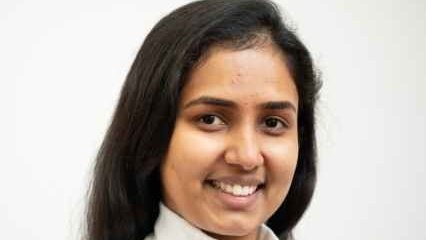
For her high impact paper.
Prabodhi’s research work focuses on fabricating high performance X-ray detectors based on organic-inorganic hybrid semiconductors. Recently, her research work paved the way to realise hybrid X-ray detectors with ultra-low dark currents well within the industrial standard of 10 pA mm-2, which is driven by the vertical phase segregation in BHJ blends to enable the lowest dark currents reported so far for organic or hybrid X-ray detectors (Nanayakkara et al, Adv. Funct. Mater. 2021 31(8), 2008482).
In addition, her research work also extended towards identifying the key design considerations for fabricating curved hybrid X-ray detectors. It was identified that organic semiconductors with higher molecular weights and flexible substrates with higher thickness are required to realise mechanically stable curved X-ray detectors. Such curved detectors displayed mechanical robustness up to bending radius as small as 1.3 mm, with a stable detector performance even after 100 repeated bending cycles (Nanayakkara et al, Adv. Sci. 2022, 2101746).

For high impact collaboration.
2021 laureate winners
Winners and contribution highlights over the last year.
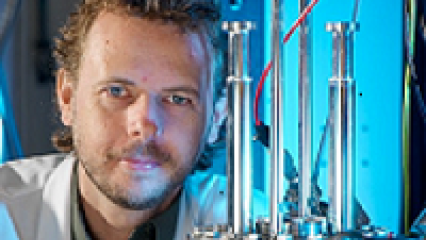
For his contribution to the Innovate UK and New Horizons grants and maintaining the FIB.
The focused ion beam activity has been a continuous theme in the ATI for over 16 years. Covering both device fabrication and characterisation it has expanded from our original Ga FIB to the current five instruments capable of utilising many different ion sources and has further expanded into deterministic implantation of single ions for quantum technologies.
Two areas of new and novel research connected to the FIBs have led to new funding opportunities from Innovate UK and EPRSRC New Horizons program. The Innovate project is partnered with Ionoptika a leading manufacturer of ion beam systems to develop new ion sources utilising rare earth elements for deterministic ion implantation. The New Horizons project builds on our new method of introducing strain into group iv semiconductors (DOI:https://doi.org/10.1103/PhysRevMaterials.5.124603) and if successful will result in a major development for silicon photonics - a direct band gap material capable of lazing and compatible with silicon processing.

For his contributions to research in high impact publications such as iScience and winning the Gold award at Carbon Conference.
We have developed a unique plasma-enhanced-chemical-vapour deposition (PECVD) system that allows to provide the next-generation of composite and polymeric materials. This system produces a space-qualifiable surface nano-barrier consisting of plasma enhanced moisture and outgassing barrier multifunctional-superlattice structure. This structure blends within the mechanical properties of the composite, thus becoming part of the composite itself. The resulting enhanced composite features physical and mechanical properties that are superior to the underlying composite, while remaining impervious to moisture and outgassing effects. Furthermore, it allows to adjust thermo-optical properties required by each application.
We demonstrated production capabilities for various Earth, Observation, Navigation and Science (ENS) missions and spin-off applications. The technology underwent harsh rigorous and environmental test campaigns for the spaceflight and started to be co-funded by the German Aerospace Center (DLR) and the European Space Agency (ESA) who are paying close attention to this research. Airbus funds this project and decided based on these research outcomes to progress with the industrialisation of the facility which team develops to make operational at the Airbus production site.

For his contributions to research in high impact publications such as NanoEnergy.
In our recent work published in Nano Energy (https://doi.org/10.1016/j.nanoen.2021.105819), we have developed an eco-friendly autonomous triboelectric smart sensor that could be potential enough to identify the dangerous driving behavior behind the wheel and make roads safer. Biocompatible materials including silk cocoon waste and silicone rubber are utilized to develop such soft and skin-friendly triboelectric sensors, which can easily incorporate into the wearables or placed within the fabric of the steering wheel, horn, gear stick, and brake pedal. Consequently, the triboelectric smart sensors coupled with an AI system could significantly identify the drivers’ activities within the car and flag the potentially dangerous driving trends, including slow brake reaction times, etc.
This work attracted widespread attention from media (e.g., phys.org, electronicsforu, etc.), also featured as the cover image of Nano Energy, in May 2021 issue (https://www.sciencedirect.com/journal/nano-energy/vol/83/suppl/C).
For his contributions to research in high impact publications such as Quantum Reports and for his contribution to the Templeton Trust grant.
Dr Kim’s group has been focusing on developing photon-based technologies to probe biological sciences, treat diseases and invent bio-quantum tools. Along the line, we have been participating in the team for the project, “The quantum arrow of time” (https://www.surrey.ac.uk/arrow-of-time), funded by a philanthropic grant by the John Templeton Foundation (£2.1 M) in 2021.
In this project, we aim to conduct experiments based on ultrafast optical spectroscopy, molecular biology and genetic engineering techniques to advance our understanding of how the ‘arrow of time’ manifests at the quantum scale and has implications for the quantum aspects of life. In addition, a recent review (Quantum Biology: An Update and Perspective, https://www.mdpi.com/2624-960X/3/1/6) published by Dr Kim and co-authors highlights the current status of some putative candidates for biological molecules and biomolecular systems that give rise to quantum mechanical effects in living systems.

For his high impact paper in Nano Energy.
For the published research work (https://doi.org/10.1016/j.nanoen.2020.105249), we demonstrated that functional molecular interface engineering (FMIE) is an efficient and facile method that synergistically reduces the interfacial recombination in inverted perovskite solar cells (PSCs). The FMIE is a solution-processed means that introducing functional molecules, the fluorene-based conjugated polyelectrolyte (CPE) and organic halide salt (OHS) on both contacts of the perovskite absorber layer. Through the FMIE, the champion PSCs with an inverted planar heterojunction structure show a remarkable high open-circuit voltage (VOC) of 1.18 V whilst maintaining a fill factor (FF) of 0.83, both of which result in improved power conversion efficiencies (PCEs) of 21.33% (with stabilized PCEs of 21.01%). Our study provides a straightforward avenue to fabricate highly efficient solar cells and suggests the significance of simultaneously modifying the interfaces between perovskite and charge transport layers. The results were then testified by a similar study (https://doi.org/10.1002/aenm.202002004) and this idea is also widely adopted by research groups in the following time (such as DOI: 10.1126/sciadv.abj7930).
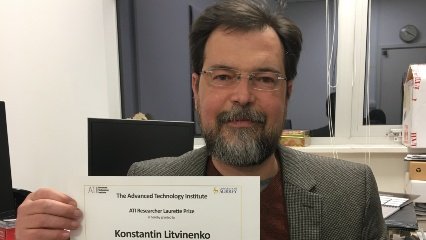
For his contributions to research in high impact publications such as Nature Communications.
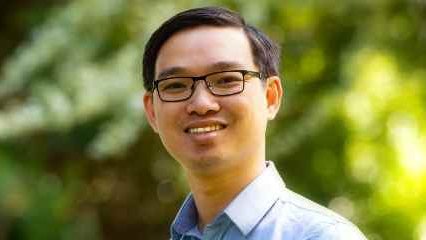
For his contributions to research in high impact publications such as Nature, Light: Science and applications paper and Advanced Functional Materials.
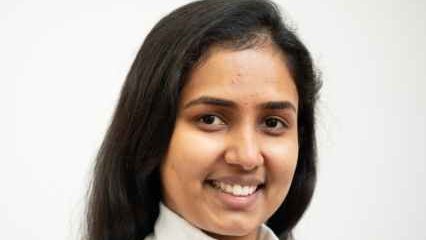
For her contributions to research in high impact publications such as Advanced Sciences.
Prabodhi’s research work focuses on fabricating high performance X-ray detectors based on organic-inorganic hybrid semiconductors. Recently, her research work paved the way to realise hybrid X-ray detectors with ultra-low dark currents well within the industrial standard of 10 pA mm-2, which is driven by the vertical phase segregation in BHJ blends to enable the lowest dark currents reported so far for organic or hybrid X-ray detectors (Nanayakkara et al, Adv. Funct. Mater. 2021 31(8), 2008482).
In addition, her research work also extended towards identifying the key design considerations for fabricating curved hybrid X-ray detectors. It was identified that organic semiconductors with higher molecular weights and flexible substrates with higher thickness are required to realise mechanically stable curved X-ray detectors. Such curved detectors displayed mechanical robustness up to bending radius as small as 1.3 mm, with a stable detector performance even after 100 repeated bending cycles (Nanayakkara et al, Adv. Sci. 2022, 2101746).
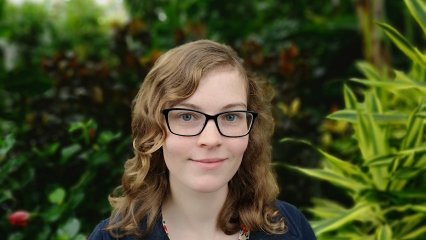
For contributions to Equality, Diversity, and Inclusion.
Throughout her PhD, Daisy has actively worked towards creating a more diverse and inclusive environment at Surrey and beyond. Her activities include sitting on the physics EDI committee, founding and managing the 'Neurodivergent in STEM' project, founding and co-chairing the Surrey Neurodiversity Networks, sitting on the Student Minds Student Advisory Committee, and being the peer mentoring coordinator for IPPSnet. She champions an intersectional approach to inclusion but particularly focuses on accessibility, disability and neurodiversity. Daisy has written widely on EDI topics in her own blog and as a guest blogger as well as regularly giving talks and engaging with the media about her experiences as a neurodivergent physicist.

For his contributions to research in high impact publications such as Advanced Functional Materials.
Jing Zhang's research target is to achieve high-performance, long-term stable, and mechanical robust flexible perovskite solar cells (f-PSCs) at a lower cost. To reach this target, carbon nanotubes (CNTs) were integrated with f-PSCs. After spending many efforts within last year, the efficiency of CNT-based f-PCSs has been upraised to ~18% with excellent environmental stability, setting a new efficiency record for ITO-free f-PSCs (Adv. Funct. Mater. 2021, 31, 2104396).
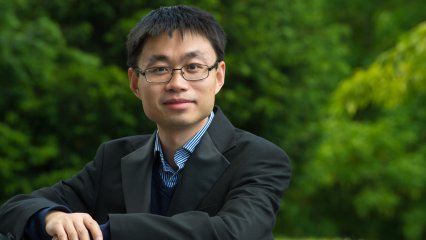
For contributions to research in high impact publications such as Advanced Materials and for his contribution to the EPSRC grant “High-Efficiency Flexible and Scalable Halide-Perovskite Solar Modules”.
Over the last year, Dr Wei Zhang’s group has published in some of the highest impact journals in the field of research. His work in Nature Materials (https://www.nature.com/articles/s41563-021-01097-x) will challenge existing assumptions and encourage new efforts to understand and ultimately harness these effects – to deliver high-efficiency solar cells as well as new devices with new functionality. His work Nature Electronics (https://www.nature.com/articles/s41928-021-00624-7) will accelerate the development of emerging data communication technology for rapid entry to the market in the next decade.
Dr Zhang's research outputs have broad impacts (with annual citations over 2000 times) and are widely reported by ScienceDaily, MRS Bulletin, Chemistry Views, PHY.ORG, etc. His research programme has gone from strength to strength, with the winning of the £2.3M Engineering and Physical Sciences Research Council (EPSRC) grant in a very difficult and tight fiscal year for the research councils. He has been selected as a Global Highly Cited Researcher by Clarivate Analytics in 2019, 2020 and 2021. He is the winner of the 2021 Vice-Chancellor's Award for Researcher of the Year, recognizing for his outstanding achievements in research.
For his contributions to research in high impact publications such as Matter.
The Covid-19 pandemic has had an enormous impact on the entire scientific community, with many of us asking how our work could help those suffering from similar future medical emergencies.
In our recent work published in Matter (https://doi.org/10.1016/j.matt.2020.12.002), we developed a smart contact lens, which features a mesh sensor layer that can measure levels of light, temperature and even glucose in tears to monitor for health complications, and not interfere with either blinking or sight of vision. This work attracted widespread attention from media (e.g., the Times, Daily Mail) and inquiries or investment intentions from the industries.
2020 laureate winners
Winners and contribution highlights over the last year.

We have developed a technology platform that allows the deposition of property-enhancing coatings on engineering-relevant substrates at room-temperature. In particular, on carbon-fibre reinforced composite materials used in spacecraft. Examples of property enhancement include improving the dimensional stability of critical-dimension components (such as those used for optical structures in space), emissivity coatings for controlling the thermal properties of satellites, and improving composite toughness.
Together, these improvements eliminate the need for various other satellite components, reducing weight and extending spacecraft durability and capability.
The technology is being up-scaled at Airbus to be deployed onto next-generation Sentinel spacecraft for Earth observation and also on up-coming space telescopes for deep-space exploration. We have used a low substrate-temperature growth method to grow a sparse-density carbon-nanotube forest (CNF) on heat-sensitive indium-tin-oxide (ITO) and fluorine-doped tin oxide (FTO) for use a charge-collectors in Perovskite solar cells. Despite the strong optical absorption and high growth temperature that is normally associated to CNF’s, our novel approach has allowed for low-temperature growth, leading to spar-density forests that allow significant light transmission, suitably apt for solar-cells. These have achieved efficiencies up to 16 per cent.

Dr Bailey’s team have been working on an EPSRC funded fellowship, to deliver molecular imaging alongside elemental imaging that is traditionally provided alongside ion beam analysis. We are currently working with collaborators at GSK, Public Health England, NPL and Rutgers University New Jersey to demonstrate early applications. We recently were successful in obtaining an EPSRC grant (£1.2M) for high resolution ion beam analysis, which will give an added dimension to the elemental imaging.
During the COVID pandemic, our mass spectrometry, measurement and clinical skills were put to work, when we repurposed our lab and team to collect samples for the COVID-19 Mass Spectrometry Coalition. We have collected 100 patient samples which are biobanked at Surrey, been awarded £2M UKRI funded and published a letter in the Lancet. Our early results are showing changes to sebum upon COVID infection, which may be used clinically for diagnosis or treatment.

Dr Dudem’s research interest is mainly focused on harnessing or sensing the various mechanical agitations available in the surrounding environments, which are usually unattended. In this regard, he developed the wearable, flexible, cost-effective, robust, biodegradable, and humidity-resistant triboelectric nanogenerators (TENGs), which can be paired with AI systems to recognize the various functionalities of distinct human body parts.
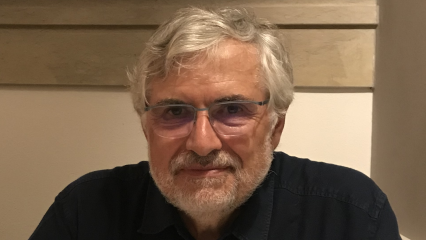
Protein molecules are the building blocks of life and a knowledge of their role is crucial to understanding disease and developing new drugs. About one third of all proteins contain small numbers of metal atoms which are essential to their function, and a long-standing problem in proteomics is identifying and quantifying these. Currently available methods lack specificity or accuracy and are too slow for routine screening of large numbers of samples.
Building on techniques of Ion Beam Analysis (Proton Induced X-ray Emission and Rutherford backscattering using a microfocused MeV proton beam), I and a colleague In the Biochemistry Department in Oxford have developed a high throughput method for precisely identifying and quantifying the metals in up to 100 protein samples in an unattended overnight run.
Two preliminary surveys of randomly selected known samples have shown that up to 50% of the metalloprotein entries in the Protein Data Bank (PDB, https://www.rcsb.org) could have incorrect metal assignments.
The implications of this are huge. Millions of protein structures are downloaded from the PDB each day and used to support fundamental biological and pharmaceutical research. Hundreds of thousands of these may contain incorrect metals, which could invalidate much of this work.
More details are available in this University of Surrey press release: https://www.surrey.ac.uk/news/new-groundbreaking-method-could-improve-accuracy-data-used-produce-lifesaving-drugs
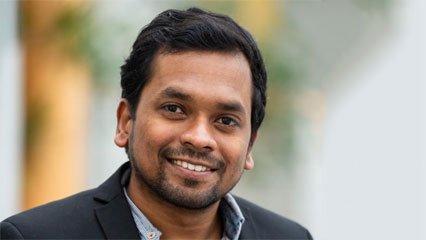
Hybrid organic-inorganic semiconductors form the basis for next generation optoelectronic devices for energy harvesting, light emission and sensing activities.
Recent work published in ACS Nano (2019, 13, 6, 6973–6981) highlight the potential for these material for X-ray imaging applications while our work on approaching theoretical limits for low bandgap solar cells (Journal of Materials Chemistry A, 2020, 8, 693-705) and our review on Perovksite tandem solar cells (Journal of Materials Chemistry C, 2020,8, 10641-10675) highlights the promise of our approach for such systems for a future based on renewable energy technologies.

Dr Le and co authors' recent works pave the way for the highly efficient third harmonic generation of THz laser by utilising the strong nonlinear interaction between light and dopant atoms (https://www.nature.com/articles/s41377-019-0174-6), and demonstrate that it is possible to realise strongly correlated topological insulators with nano-fabricated lattices of dopant arrays in silicon (https://www.nature.com/articles/s41534-020-0253-9).
Consolidating collaboration in the UK and abroad, Dr Sporea has been focusing on developing new device structures for large area and printed electronics. A major hurdle in the path of acceptance of new technology in industry is the repeatability of performance and device maufacturability.
In this study, the research showed that controlling contact properties at the nanoscale we are able to significantly increase the robustness of IGZO transistors for analog applications, in an effort spanning advanced fabrication and simulation.

Jing Zhang's research target is to achieve high-performance, long-term stable, and mechanical robust flexible perovskite solar cells (f-PSCs)at a lower cost. To reach this target, carbon nanotubes (CNTs) were integrated with f-PSCs. After spending many efforts within last year, the efficiency of CNT-based f-PCSs has been upraised to ~16% with excellent environmental stability. (This research work is now under drafting).
Moreover, a review paper, which systematically analysed and summarised the breakthroughs of flexible perovskite solar cells that were made in the last 5 years, was published on Materials Today on May 2020.
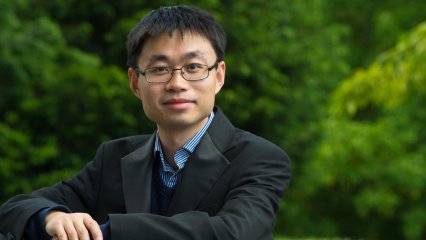
Perovskite solar cells are at the forefront of next-generation photovoltaic technologies.
Our recent work on highly efficient inverted perovskite solar cells through device structure engineering (Advanced Materials Interfaces 2020, 2001121) and interface modification (Nano Energy 2020, 78, 105249), as well as the recent review articles on flexible (Materials Today 2020, (https://doi.org/10.1016/j.mattod.2020.05.002) and tandem solar cells (Chemical Reviews 2020, 120, 9835-9950) showcase this exciting research field and future applications, which are expected to accelerate the commercialization of this low-cost and high-efficiency photovoltaic product as a major competitor to the traditional crystalline silicon solar cells in the next few years.
Over the last year, Dr Yunlong Zhao awarded the New Investigator Award from the Engineering and Physical Sciences Research Council (EPSRC) to develop a new lithium-ion battery technology that is capable of capturing CO2 emissions.
Dr Zhao also produced the ultra-small nanowire field-effect transistor probes for intracellular recording, which was published on Nature Nanotechnology (DOI: 10.1038/s41565-019-0478-y). This achievement is considered as one of the leap forward in high-resolution human-machine interfaces.


